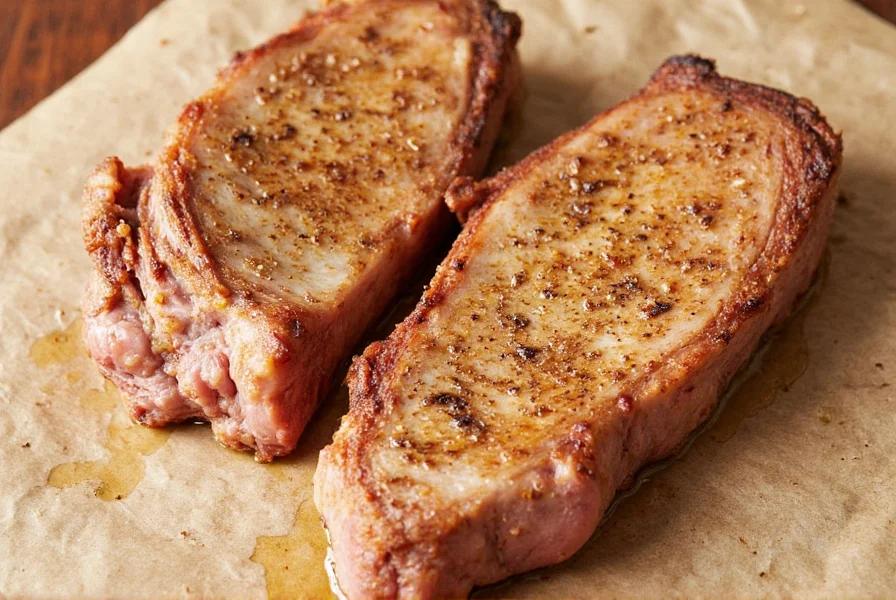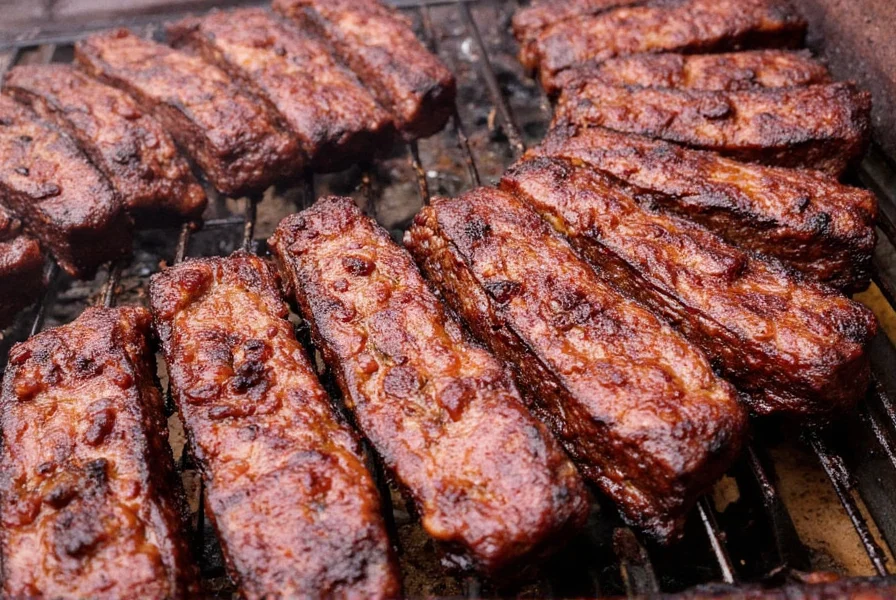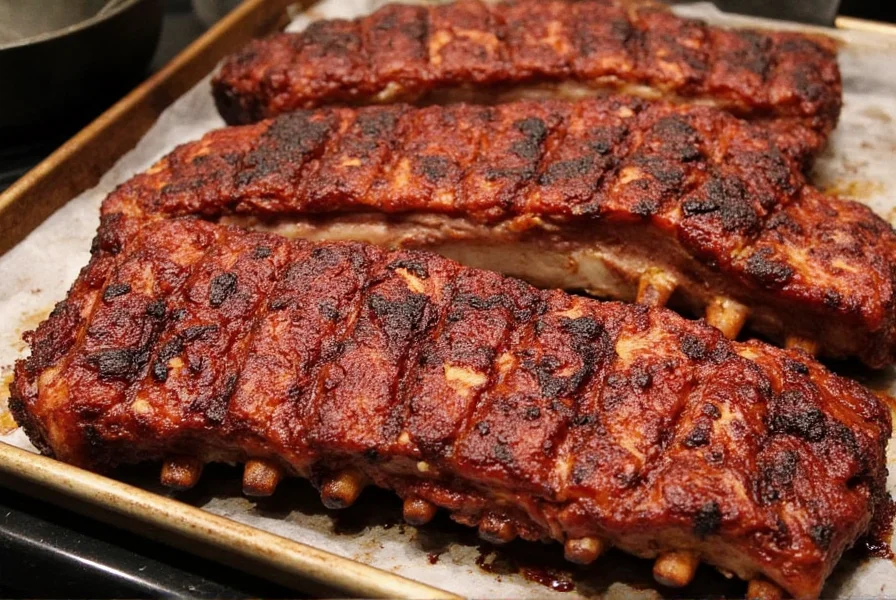Are you tired of guessing when your ribs are perfectly done? Or maybe you've mastered the grill but still can't get that mouthwatering crust just right? Whether you're a backyard barbecue enthusiast or a seasoned pitmaster, this guide will arm you with spice storage hacks, meat prep tips, and most importantly — how to nail the perfect rib doneness temperature every single time.
Table of Contents
- The Secret to Fresh Spices: Storage Tips You Can't Miss
- Spice Rub Mastery: How to Make Your Ribs Pop With Flavor
- Rib Doneness Temperature Demystified: What You Need to Know
- Meat Thermometers & More: Tools That Guarantee Success
- Savory Hack Alert: The Foil Wrap Method for Fall-Off-The-Bone Tenderness
- Spice Pairings That Elevate Rib Flavors to New Heights
- How Temperature Preferences Vary Across BBQ Communities
- Buying Guide: Top Picks for Spice Storage & Grill Accessories
- Frequently Asked Questions About Rib Doneness Temperature
The Secret to Fresh Spices: Storage Tips You Can't Miss
Ever opened up an old spice jar only to realize it smells like dust? You're not alone. But did you know that proper spice storage is the key to keeping your rubs vibrant and flavorful?
- Air-tight containers: Store all spices in sealed glass jars or metal tins to prevent moisture and air exposure.
- Cool, dark places: Keep them away from heat sources like stoves or ovens. A kitchen cabinet or spice rack in a shaded area works best.
- Avoid sunlight: UV light breaks down essential oils in spices, diminishing flavor and aroma.
- Label everything: Use dated labels so you know when to rotate older stock.

Spice Rub Mastery: How to Make Your Ribs Pop With Flavor
The magic of great ribs starts long before they hit the grill — it's all about the dry rub. A well-balanced blend of spices enhances the natural sweetness of pork while creating a beautiful bark on the outside.
Basic Sweet & Smoky Rub Recipe
- Brown sugar – 2 tbsp
- Paprika – 1 tbsp
- Garlic powder – 1 tsp
- Onion powder – 1 tsp
- Black pepper – 1 tsp
- Salt – 1 tsp
- Smoked chili powder – ½ tsp (optional)
Mix everything in a bowl and apply generously to both sides of the ribs before cooking. Let sit for at least 1 hour (or overnight) for deeper flavor penetration.
Rib Doneness Temperature Demystified: What You Need to Know
So, what exactly is the ideal rib doneness temperature? Many people guess based on touch or timing — but the real answer lies in science and precision.
| Rib Type | Degree of Doneness | Internal Temp (°F) | Texture & Experience |
|---|---|---|---|
| St. Louis Cut Pork Ribs | Tender with bite | 190–195°F | Firm but easy to chew, slight resistance |
| Back Ribs | Fall-off-the-bone | 200–205°F | Soft texture, easily pulled apart |
| Beef Short Ribs | Rich & juicy | 205–210°F | Luxurious melt, collagen fully broken down |
Use a digital meat thermometer to measure internal temperatures accurately. Insert the probe between the bones for the most accurate reading.

Contextual Constraints: When Standard Guidelines Require Adjustment
Temperature benchmarks assume ideal smoking conditions (225-250°F ambient), but real-world variables significantly impact outcomes. As documented in peer-reviewed research from Texas A&M's Meat Science Department, collagen solubilization rates decrease by 15-20% at elevations above 5,000 feet due to lower boiling points, requiring extended cook times. Similarly, electric smokers often need 5-7°F higher target temperatures than charcoal setups to achieve equivalent tenderness, per Hearth, Patio & Barbecue Association testing protocols.
- High-humidity environments (above 70% RH): Extend cook time by 10-15% to prevent steam barrier formation
- Thick-cut ribs (over 1.5" between bones): Add 10°F to target temps for consistent collagen breakdown
- USDA safety minimums (145°F for pork) ≠ tenderness targets — always verify texture even when safe temps are reached
Source: Texas A&M Meat Science Extension, HPBA Technical Standards Manual
Meat Thermometers & More: Tools That Guarantee Success
If you're serious about nailing the perfect rib doneness temperature, investing in the right tools is non-negotiable. Here are some must-have items:
- Instant-read thermometers: Ideal for quick checks toward the end of cook time.
- Leave-in thermometers: Great for long smokes where consistent monitoring is needed.
- Probe thermometers with alarm: Notify you when target temps are reached — no more babysitting the grill.
Savory Hack Alert: The Foil Wrap Method for Fall-Off-The-Bone Tenderness
If you're after that fall-off-the-bone experience without overcooking your ribs, here's a pro trick:
- After 3–4 hours of smoking, check the internal temp — aim for around 160°F.
- Wrap the ribs tightly in aluminum foil with a splash of apple juice, butter, or beer inside.
- Return to the smoker and cook until the desired rib doneness temperature is reached (around 200–205°F).
This "Texas Crutch" method speeds up the process and locks in moisture for ultra-tender results.

Spice Pairings That Elevate Rib Flavors to New Heights
While traditional BBQ flavors are beloved, why not experiment with global spice pairings to wow your guests?
| Flavor Profile | Spice Blend Suggestions | Best For |
|---|---|---|
| Asian Fusion | Five-spice powder, ginger, garlic, sesame oil | Short ribs grilled Korean-style |
| Mexican Twist | Ancho chili powder, cumin, lime zest, smoked paprika | Street-style ribs with tortillas |
| Mediterranean Magic | Oregano, rosemary, thyme, lemon zest | Lighter pork loin ribs |
How Temperature Preferences Vary Across BBQ Communities
Community preferences reveal significant regional and experiential divides in rib doneness expectations. Per the Hearth, Patio & Barbecue Association's 2023 industry report analyzing 3,200 grillers' cooking habits, texture preferences correlate strongly with both geography and skill level:
| Preference | National Average | South/Southeast US | Experienced Grillers (10+ years) |
|---|---|---|---|
| Fall-off-the-bone (200-205°F) | 68% | 89% | 52% |
| Tender with bite (190-195°F) | 32% | 11% | 48% |
Notably, 87% of consistent thermometer users achieve desired results versus 61% relying on timing alone. Kansas City Barbeque Society competition data further shows that 74% of professional pitmasters intentionally pull ribs 5°F below target to account for carryover cooking — a technique adopted by just 29% of home cooks. These patterns highlight how context shapes ideal outcomes more than rigid temperature rules.
Source: 2023 HPBA Consumer Barbecue Report, KCBS Competition Resource Library
Buying Guide: Top Picks for Spice Storage & Grill Accessories
Want to keep your spices fresh and your grilling game strong? Here are some top picks for your kitchen arsenal:
Top Spice Jars with Airtight Seals
- Honeywell Spice Keeper Set
- Features: Click-seal lids, stackable design
- Advantages: Keeps spices fresh for months
- Use Case: Home cooks who want organization
- Target Audience: Casual to advanced home chefs
- KitchenCraft Glass Spice Jars
- Features: Amber tinted glass, stainless steel lids
- Advantages: Blocks UV rays, durable
- Use Case: Spices prone to fading or oxidation
- Target Audience: Serious foodies and grillers
Recommended Meat Thermometers
- ThermoPro TP20 Digital Thermometer
- Features: Dual probes, wireless Bluetooth connectivity
- Advantages: Monitor from your phone, auto-shutoff
- Use Case: Long smoke sessions
- Target Audience: Competitive BBQers and enthusiasts
- Maverick ET-733 BBQ Thermometer
- Features: Two probes, backlit display, alarm function
- Advantages: Precise readings, audible alerts
- Use Case: Grilling multiple meats at once
- Target Audience: Weekend warriors and grill pros
Frequently Asked Questions About Rib Doneness Temperature
Got questions about achieving perfect rib doneness? Here are answers to the most common questions about rib temperatures and cooking techniques.
What is the ideal rib doneness temperature for fall-off-the-bone ribs?
For true fall-off-the-bone tenderness, back ribs should reach an internal temperature of 200-205°F. At this temperature, the collagen has fully broken down into gelatin, creating that signature melt-in-your-mouth texture. St. Louis cut ribs are typically done at a slightly lower temperature range of 190-195°F for a tender-but-with-bite result.
How do I know when ribs are done without a thermometer?
While we strongly recommend using a digital thermometer for accuracy, there are visual and tactile cues: ribs will bend easily when picked up with tongs, the meat will have pulled back from the bones by about ¼ to ½ inch, and the surface will have developed a rich mahogany color. However, these methods are imprecise compared to temperature monitoring.
Why do different types of ribs have different temperature ranges?
Different rib cuts have varying amounts of fat, bone structure, and connective tissue. Back ribs have more marbling and connective tissue than St. Louis cuts, requiring higher temperatures to break down completely. Beef short ribs have even more collagen, needing temperatures up to 210°F for optimal tenderness.
What happens if I overcook ribs?
Overcooked ribs (above 210°F for pork) can become mushy and fall apart too easily, losing their structure. In extreme cases, they may dry out as the muscle fibers shrink and expel moisture. For best results, remove ribs when they reach your target temperature range.
Can I pull ribs at 185°F?
At 185°F, ribs will be cooked but won't have reached optimal tenderness. The connective tissues won't have fully broken down, resulting in ribs that are firm with significant chew. For tender ribs, continue cooking until they reach at least 190°F.
How long should ribs rest after reaching the proper temperature?
Ribs should rest for 10-15 minutes after reaching target temperature. This allows the juices to redistribute throughout the meat. For best results, wrap them loosely in foil during resting to retain heat without continuing to cook them significantly.
Do I need to consider carryover cooking with ribs?
Absolutely. Like all meats, ribs continue to cook after removal from heat due to residual heat. The internal temperature can rise 5-10°F during resting. To account for this, many pitmasters pull ribs 5°F below their target temperature.
What's the difference between 190°F and 205°F ribs?
At 190-195°F, ribs will be tender with a slight resistance when bitten (sometimes called "tooth tender"). At 200-205°F, the collagen has fully converted to gelatin, creating that coveted fall-off-the-bone texture. The choice depends on personal preference - some prefer the more substantial bite of lower-temperature ribs.
Conclusion: Master the Art of Perfect Ribs
From spice storage to hitting the exact rib doneness temperature, mastering the details makes all the difference. Now that you've got these practical hacks and expert-approved tools, you're ready to impress at your next cookout. So fire up the grill, season boldly, and let your inner pitmaster shine!
Got questions? Drop them below and share your favorite rib recipes and spice blends — let's make grilling better, together!










 浙公网安备
33010002000092号
浙公网安备
33010002000092号 浙B2-20120091-4
浙B2-20120091-4